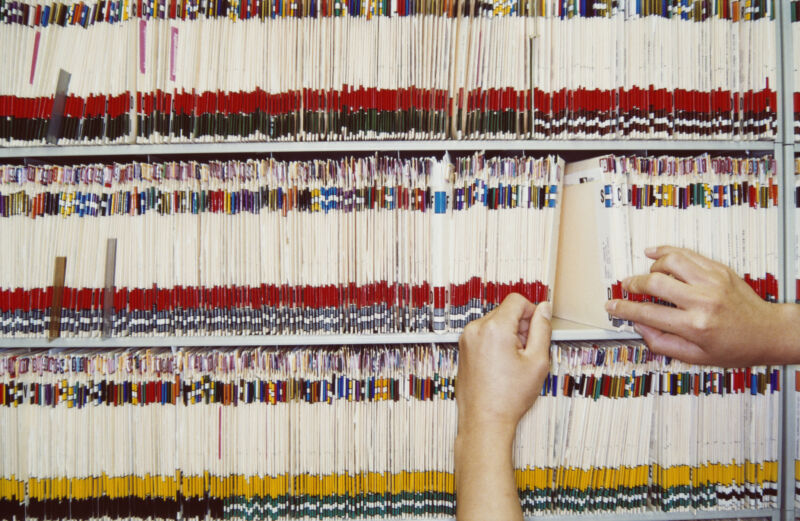
10 years back, 12-calendar year-previous Rory Staunton dove for a ball in gymnasium class and scraped his arm. He woke up the future working day with a 104° F fever, so his dad and mom took him to the pediatrician and ultimately the crisis space. It was just the stomach flu, they ended up informed. 3 days afterwards, Rory died of sepsis just after microbes from the scrape infiltrated his blood and brought on organ failure.
“How does that materialize in a present day society?” his father, Ciaran Staunton, said in a new interview with Undark.
Each calendar year in the United States, sepsis kills about a quarter million people—more than stroke, diabetic issues, or lung most cancers. One motive for all this carnage is that sepsis isn’t really nicely understood, and if not detected in time, it is in essence a death sentence. Consequently, considerably exploration has targeted on catching sepsis early, but the disease’s complexity has plagued current clinical support systems—electronic applications that use pop-up alerts to make improvements to individual care—with lower precision and substantial charges of fake alarm.
That may well quickly alter. Again in July, Johns Hopkins scientists posted a trio of research in Mother nature Drugs and npj Digital Medication, showcasing an early warning program that works by using artificial intelligence. The program caught 82 per cent of sepsis situations and reduced fatalities by approximately 20 percent. Although AI—in this situation, machine learning—has prolonged promised to make improvements to healthcare, most research demonstrating its gains have been executed on historic datasets. Sources told Undark that, to the best of their information, when utilised on patients in serious-time, no AI algorithm has proven results at scale. Suchi Saria, director of the Machine Studying and Well being Treatment Lab at Johns Hopkins College and senior writer of the studies, claimed the novelty of this investigate is how “AI is carried out at the bedside, used by hundreds of vendors, and in which we’re looking at life saved.”
The Targeted True-time Early Warning Process, or TREWS, scans via hospitals’ electronic health and fitness records—digital variations of patients’ health care histories—to determine scientific signals that forecast sepsis, warn companies about at-hazard patients, and aid early remedy. Leveraging broad amounts of details, TREWS presents genuine-time affected person insights and a unique amount of transparency into its reasoning, according to research co-author and Johns Hopkins inner drugs physician Albert Wu.
Wu claimed that this procedure also gives a glimpse into a new age of professional medical electronization. Because their introduction in the 1960s, electronic wellness documents have reshaped how physicians doc medical facts, but a long time afterwards, these programs generally provide as “an digital notepad,” he extra. With a series of machine mastering tasks on the horizon, the two from Johns Hopkins and other groups, Saria stated that applying digital documents in new strategies could transform health care supply, offering physicians with an more established of eyes and ears—and support them make greater selections.
It’s an engaging eyesight, but one in which Saria, as CEO of the company producing TREWS, has a monetary stake. This vision also savings the difficulties of implementing any new health-related engineering: Companies could be reluctant to belief equipment learning resources, and these systems could not do the job as effectively outside controlled investigation options. Digital well being records also arrive with many existing difficulties, from burying providers below administrative work to risking patient security for the reason that of application glitches.
Saria is even so optimistic. “The technological know-how exists, the details is there,” she reported. “We truly want high-high-quality care augmentation equipment that will allow companies to do more with a lot less.”

Currently, there’s no solitary test for sepsis, so health care companies have to piece with each other their diagnoses by reviewing a patient’s health care history, conducting a actual physical examination, functioning exams, and relying on their own medical impressions. Supplied this kind of complexity, above the earlier 10 years doctors have ever more leaned on digital overall health documents to help diagnose sepsis, primarily by using a policies-based conditions—if this, then that.
One particular these kinds of illustration, identified as the SIRS standards, says a affected individual is at chance of sepsis if two of four medical signs—body temperature, heart price, respiration charge, white blood mobile count—are irregular. This broadness, even though useful for catching the various techniques sepsis might existing itself, triggers a great number of false positives. Get a patient with a damaged arm. “A computerized procedure may possibly say, ‘Hey seem, fast coronary heart price, respiratory quick.’ It may toss an warn,” stated Cyrus Shariat, an ICU medical professional at Washington Hospital in California. The affected individual pretty much absolutely does not have sepsis but would however vacation the alarm.
These alerts also look on providers’ laptop screens as a pop-up, which forces them to cease regardless of what they are accomplishing to answer. So, even with these guidelines-centered methods at times minimizing mortality, there’s a hazard of alert tiredness, where by healthcare staff start out ignoring the flood of irritating reminders. According to M. Michael Shabot, a trauma surgeon and previous main scientific officer of Memorial Hermann Overall health Procedure, “it’s like a hearth alarm likely off all the time. You have a tendency to be desensitized. You don’t pay back focus to it.”
By now, electronic documents are not significantly well-known amongst doctors. In a 2018 study, 71 % of doctors explained that the records considerably add to burnout and 69 percent that they consider precious time absent from sufferers. A different 2016 analyze located that, for each individual hour used on affected person treatment, medical professionals have to commit two extra hours to electronic wellbeing information and desk perform. James Adams, chair of the Office of Unexpected emergency Drugs at Northwestern College, named electronic overall health information a “congested morass of information.”






More Stories
Reliable and reproducible Linux installation with NixOS
Big data infrastructure internship | Adaltas
Blockchain 102: Cryptocurrencies, Wallets and DApps